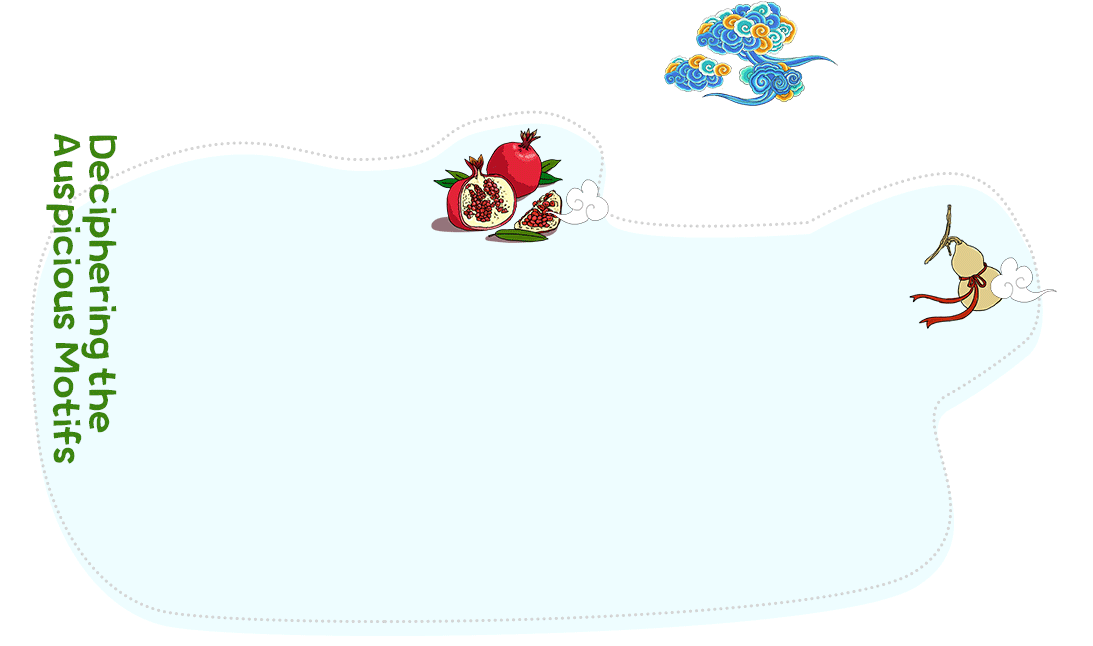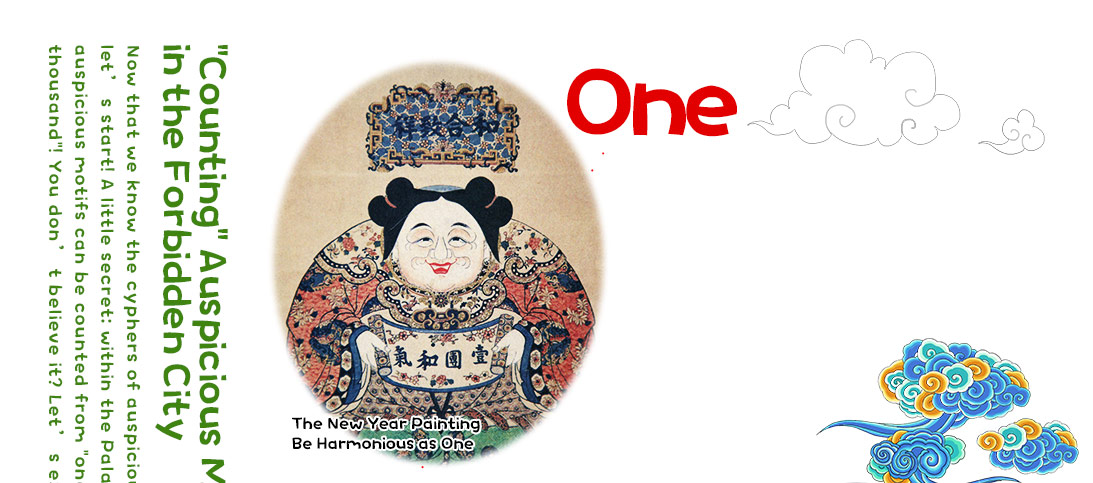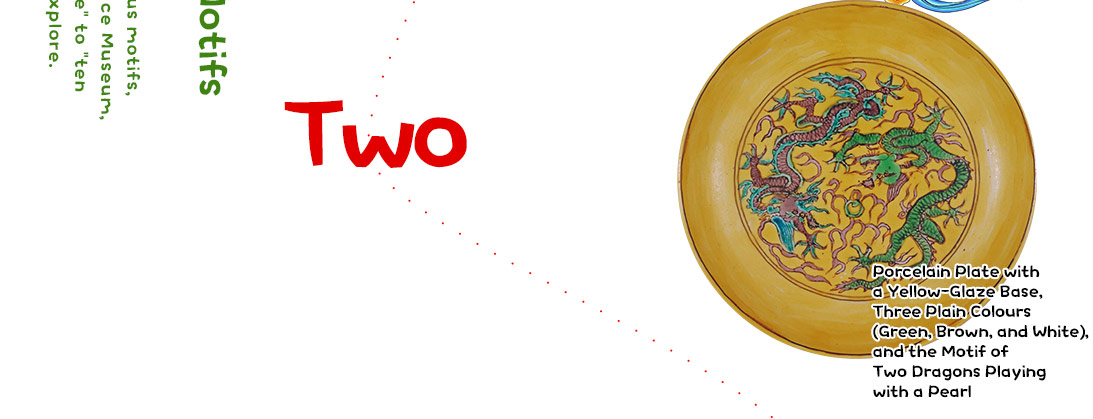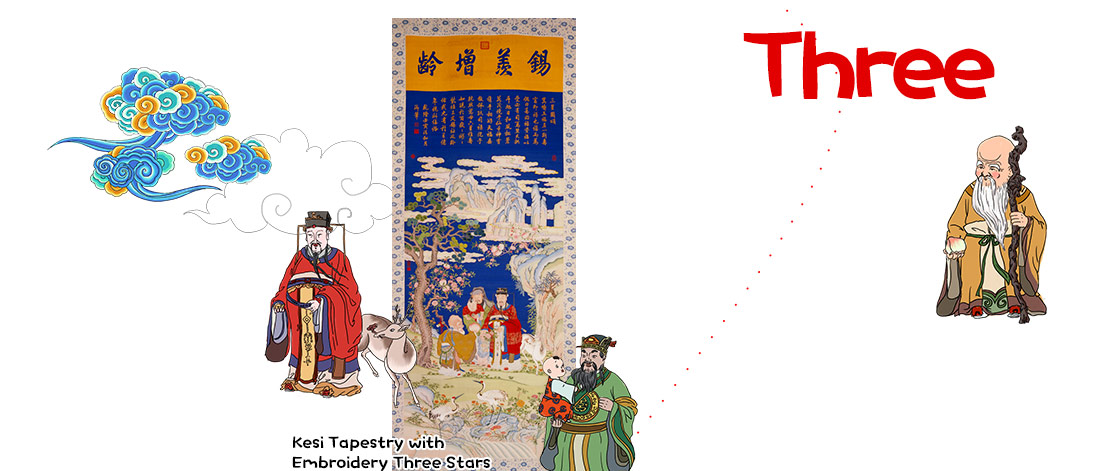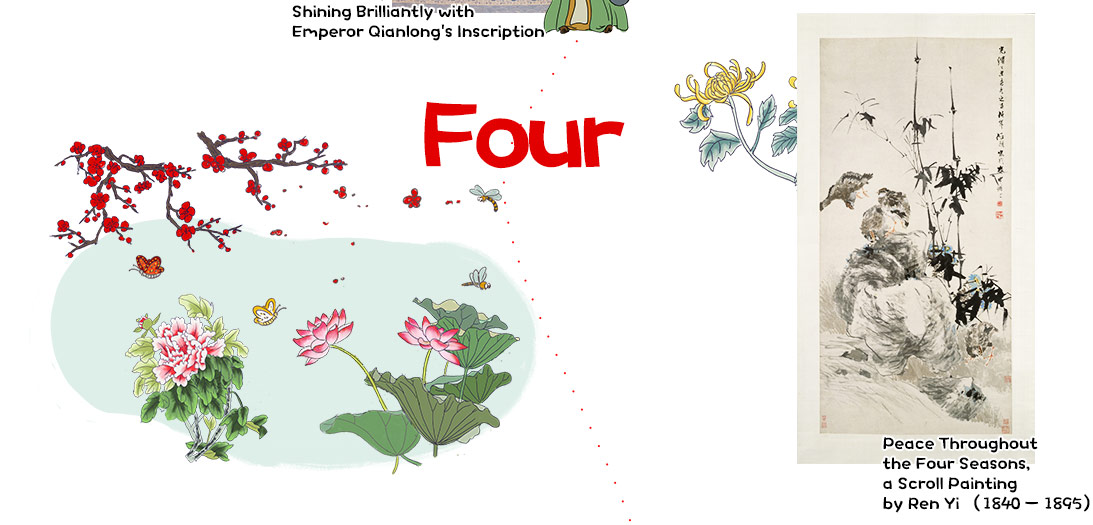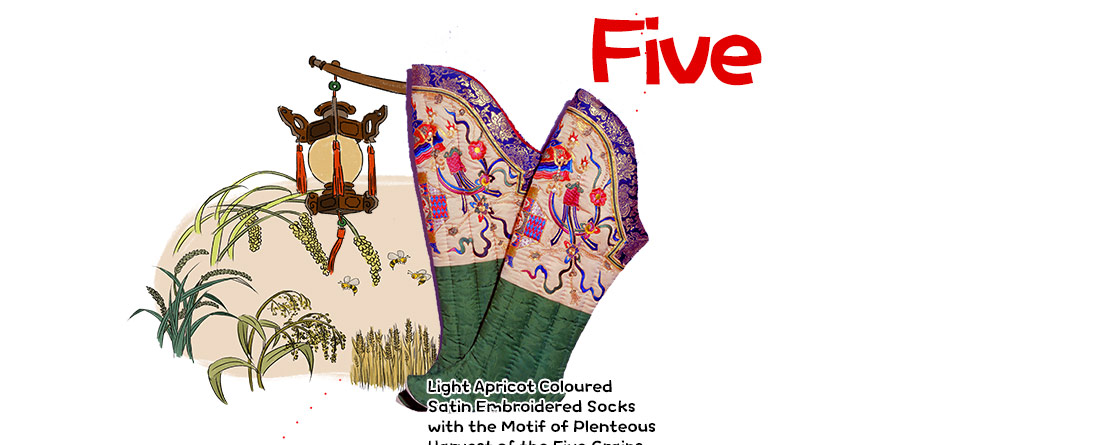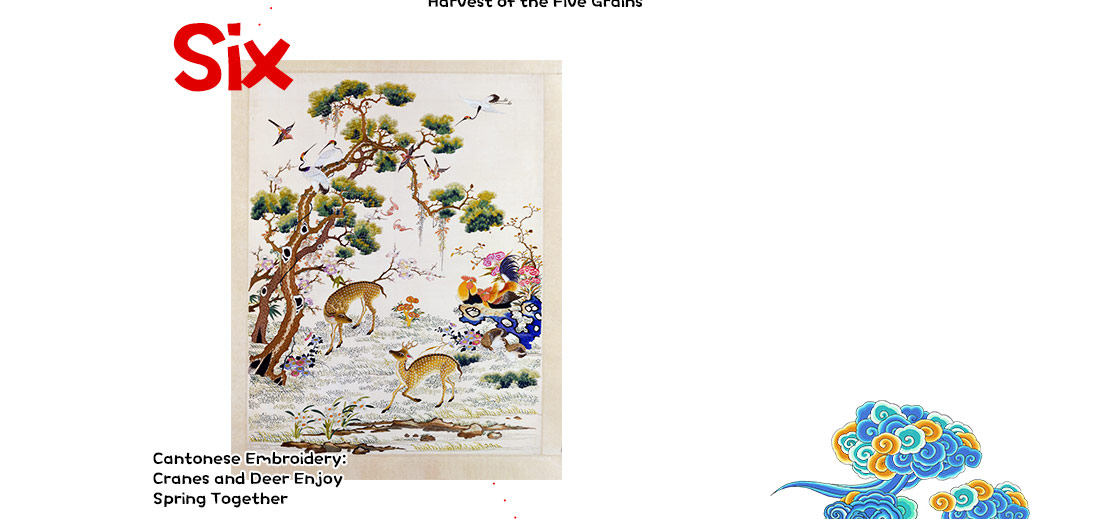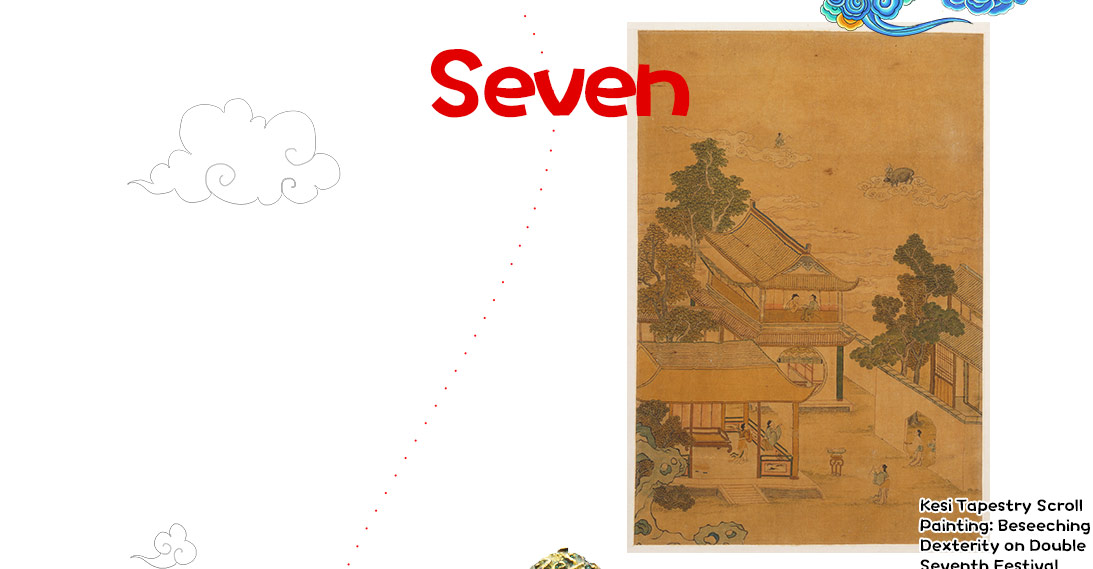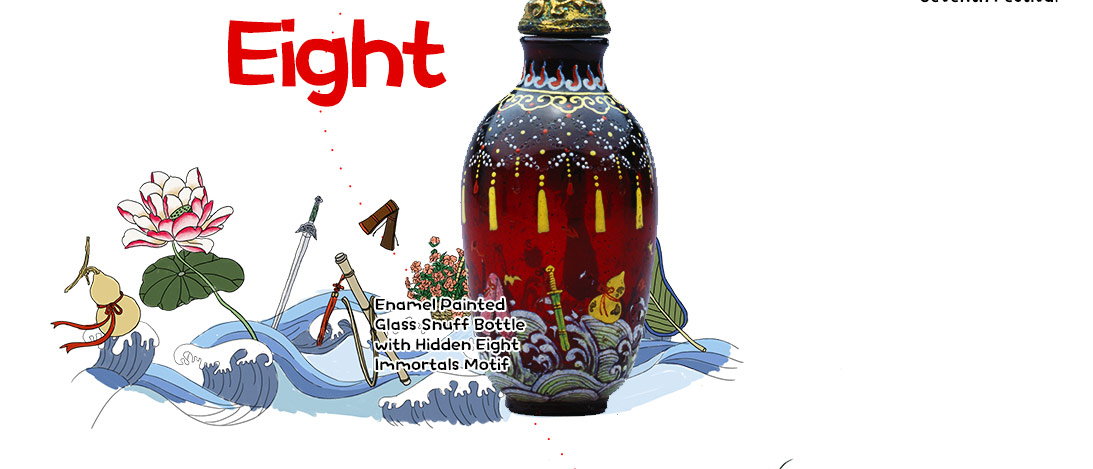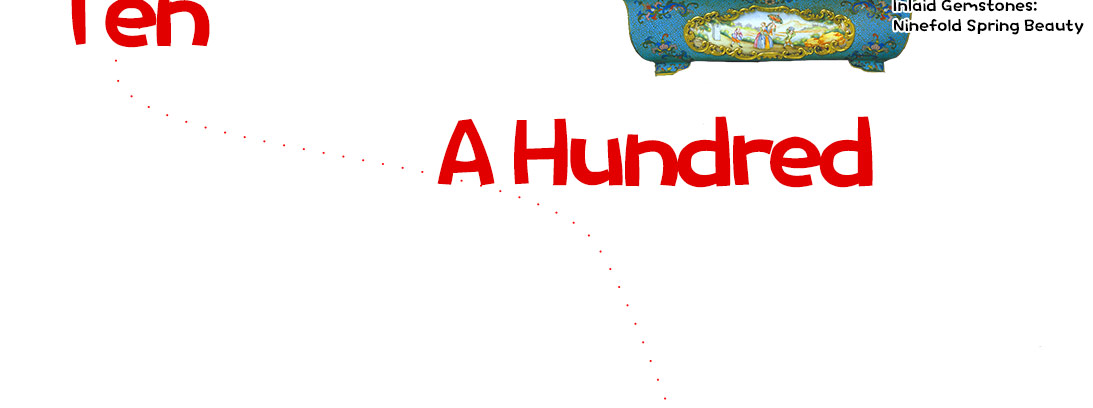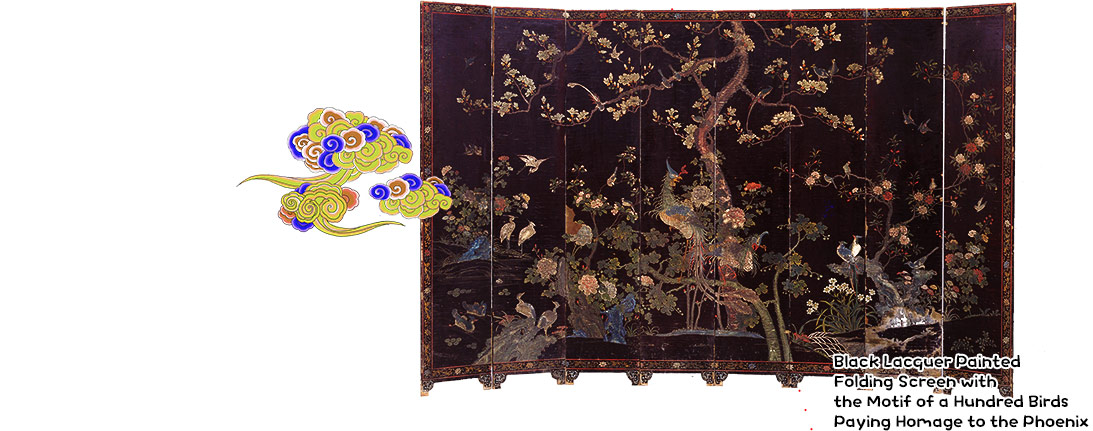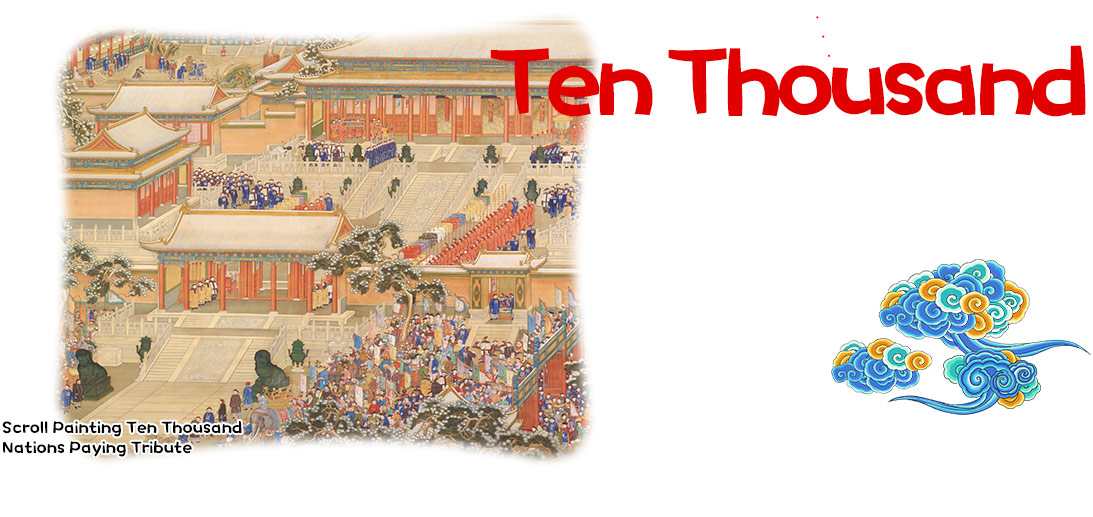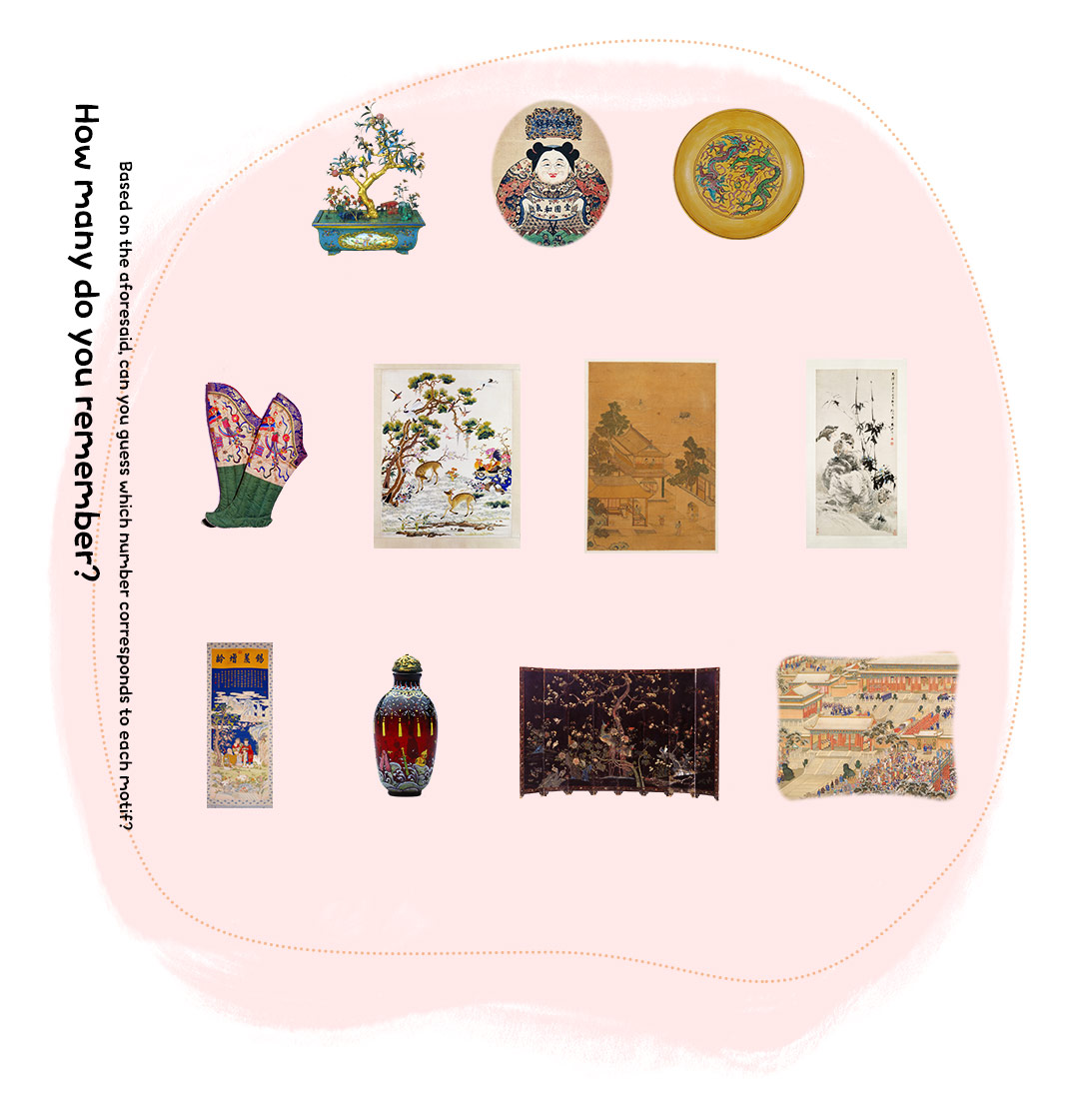Auspicious signs, also omens of good fortune, range from celestial clouds and underground springs to mythical animals like the qilin and phoenix, each carrying its own blessing. Ancient people loved to adorn paintings, artefacts, and buildings with auspicious motifs, reflecting their longing for a prosperous and joyful life.
The Forbidden City is filled with numerous auspicious motifs—let’s go on a hunt for them!
To find auspicious motifs,
we must first understand their cyphers.
Cypher One: Symbolic Meaning
Some motifs convey blessings through their natural characteristics. Plants like pomegranates, grapes, and gourds, rich with seeds, symbolise many descendants. Pine and cypress trees, known for their evergreen qualities, along with the long-lived tortoise and crane, are used to wish for longevity.
Cypher Two: Homophones
Why do so many screen walls of quadrangle courtyards feature bats? Because "bat" (fu, 蝠) sounds like "fortune" (fu, 福). And why are apples placed on a saddle at weddings? This is to signify “safe and well” (ping an, 平安) through homophony.
The Chinese language’s many homophones and polyphones allow for clever wordplay in auspicious symbolism.
Cypher Three: Direct Expression
Sometimes, wishes are directly expressed in auspicious words, such as "Fortune, Prosperity, and Longevity" or "Endless Good Fortune".
These are just the three most common cyphers of auspicious motifs, which can also be combined to enhance their joyful meanings.
Be Harmonious as One
A plaque with the words "Be Harmonious as One" inscribed by Emperor Yongzheng (r. 1722–1735) hangs on the south window of the Grand Council. It was said to reconcile contradictions among grand councillors. Similarly, table screens and New Year paintings often depict a motif of "Be Harmonious as One", symbolised by figures embracing in a circle.Two Dragons Playing with a Pearl
Dragons, auspicious creatures in Chinese mythology, were symbols of emperors, who called themselves the "true dragon descending from Heaven". As a result, dragon motifs are ubiquitous in the Forbidden City’s decorations. Some interpret "two dragons playing with a pearl" as a male and female dragon protecting their offspring; others see it as two dragons greeting the rising sun, with the "pearl" symbolising the sun.Three Stars Shining Brilliantly
Wishes for good fortune and blessings are often conveyed with the phrase “Three Stars Shining Brilliantly”. The “Three Stars” refer to the gods of fortune (fu, 福), prosperity (lu, 禄), and longevity (shou, 寿). Ming dynasty (1368–1644) scholar Li Dongyang (1447–1516) summarised that the god of fortune was often depicted with a child, surrounded by bats and cranes; the god of prosperity wore a tall hat and elegant robe, accompanied by a celestial deer; and the god of longevity had a youthful face, holding a peach.Peace Throughout the Four Seasons
"Peace throughout the Four Seasons" is a common blessing, represented in various ways. For instance, flowers symbolise the seasons: peonies for spring, lotuses for summer, chrysanthemums for autumn, and plum blossoms for winter. Additionally, because the word for "vase" (ping, 瓶) sounds like "peace" (ping, 平), vases are often used symbolically and combined with seasonal flowers to convey the wish for peace throughout the year.Plenteous Harvest of the Five Grains
Do you know the five grains? Traditionally, they refer to rice, proso millet, foxtail millet, wheat, and soybean, though over time, they have come to represent all grains. Ancient people used images of grains, bees, and lanterns to symbolise "plenteous harvests", expressing their hopes for a year of favourable weather and bountiful crops.Spring Blossoms Across the Six Directions
The "six directions" refer to the four cardinal directions (north, south, east, and west) plus up and down, implying the whole world. “Spring Blossoms Across the Six Directions” is a New Year’s blessing, symbolising spring's arrival throughout the land and the flourishing of all things. This wish is often expressed with six cranes, verdant waters, and evergreen pines to stand for “Spring Blossoms Across the Six Directions” and “Evergreen Pines and Celestial Cranes Heralding Longevity”. Sometimes, the homophonic relationship between “deer” (lu, 鹿) and “six” (liu, 六) is employed, pairing deer and cranes to convey this blessing.Beseeching Dexterity on Double Seventh Festival
According to legend, Qixi, also known as Double Seventh Festival because it falls on the seventh day of the seventh lunar month, is the day when the Cowherd (Niulang) and the Weaver Girl (Zhinü) reunite on the Magpie Bridge, and it is also the day when young women pray for dexterity. During the day, a bowl of water is placed under the sun to evaporate slightly. Once a thin film forms on the surface, an embroidery needle is placed into the bowl. The needle will float on the surface, and the shadows it casts at the bottom of the bowl resemble flowers, birds, beasts, or shoes and scissors, signifying that the Weaver Girl has gifted the young woman a magical embroidery needle, enabling her to create beautiful designs.The Eight Immortals Offering Birthday Congratulations
Legend has it that the Queen Mother of the West (Xiwangmu) held a grand peach banquet for the immortals, where the Eight Immortals headed to the Jade Pool (Yaochi) to celebrate. Passing by the East Sea, they found they were early, so each demonstrated their unique abilities by using their magical treasures to ride the waves and traverse the waters. The tales of the Eight Immortals are often depicted as auspicious decorative motifs. When only their treasures are shown, the motif is referred to as the “Hidden Eight Immortals”.Ninefold Spring Beauty
In ancient times, the number “nine” symbolised the utmost abundance and greatness. “Ninefold Spring Beauty” expresses admiration for spring, a wish for the boundless beauty of spring to linger eternally in the human world.Tenfold Everlasting Fortune
To secure the empire’s borders, Emperor Qianlong (r. 1735–1796) conducted ten major military campaigns, all successful. He called these accomplishments his “Ten Great Campaigns” (Shiquan wugong) and styled himself the "Old Man of the Ten Completed" (Shiquan laoren). The phrase “Tenfold Everlasting Fortune” thus came to represent a life of flawless perfection with unending good fortune.A Hundred Birds Paying Homage to the Phoenix
The phoenix, a mythical bird in Chinese mythology, is regarded as the king of all birds and a creature of auspiciousness. The male is called “feng” and the female “huang”, collectively known as “fenghuang” or simply phoenix. The imagery of “A Hundred Birds Paying Homage to the Phoenix” symbolises a wise and virtuous ruler, reflecting people's aspirations for a harmonious and prosperous era.Ten Thousand Nations Paying Tribute
“Ten Thousand Nations Paying Tribute” is an auspicious sign of peace, prosperity, and national strength, symbolising a wise and virtuous sovereign under whom the world submits, with all countries coming to offer tribute.Look! Aren’t these motifs countless? In fact, these auspicious motifs and blessings are only a small part of the collection in the Forbidden City. Beyond these, there are also motifs like “Double Bliss at the Door” (Shuangxi linmen), “Three Rams Heralding an Auspicious Beginning” (Sanyang kaitai), “Good Fortune in Four Directions” (Sihe ruyi), “Five Sons Succeeding in the Imperial Examinations” (Wuzi dengke), and more. Can you think of any others?

